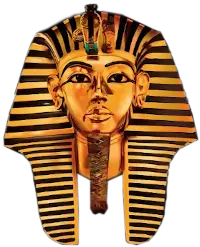
writings of Plato, and that is that they are disputed not only by such modern scholars as Grote and Schaarsmidt, but also by ancient historians: Diogenes Laertius, Aristoxenus and Favorinus (80-150 A.D.), who declare that the subject matter of the Republic was found in the controversies written by Protagoras (481-411 B.C.) at the time of whose death Plato was but a boy.
Furthermore, the authorship of Plato rests only upon the opinions of Aristotle and Theophrastus, both of whose aims were the compilation of a Greek philosophy with Egyptian material.
(Diogenes Laertius, p. 311 and 327; Aristotle Metaphysics Bk. I).
(Zeller's History of Philosophy; Introduction, p. 8 and 13; Wm. Turner's History of Philosophy, p. 95).
Concerning the second conclusion, it must be pointed out that the allegory of the "Charioteer and the winged steeds" is a description of the quality and destiny of the soul as it appears at the bar of justice, in the Judgment Drama of the Egyptian Book of the Dead. In this Drama, the Great Chief Justice and President of the Unseen World, Pethempamenthes, i.e., Osiris is seated on a throne, and is attended by the Goddesses Isis and Nephthys, while 42 assistant judges are seated around.
Near Osiris there are four genii of Amenthe, the Unseen World, represented as short vases, called canopi, in which the different viscera, symbolizing the moral qualities of the individual, are kept embalmed. The intestines hive a very important connection with the moral qualities of the individual since they are blamed for any sin which the individual commits. At the opposite end the deceased is introduced by Horus, while in the centre stands the Scale of Justice which has been erected by Anubis. On one side of it, there appears a heart-shaped vase containing the moral qualities of the deceased, while on the other side, there is a figure of the Goddess of Truth. Toth,
Topics
Greek Philospohy is Stolen Egyptian Philosophy
The Memphite Theology is the Basis of all Important Doctrines of Greek Philosophy
Greek Philosophy was Alien to the Greeks
Greek Philosophy was the offspring of the Egyptian Mystery System
The Egyptians Educated the Greeks
The Curriculum of the Egyptian Mystery System
The Pre-Socratic Philosophers and the teaching Ascribed to them
The Athenian Philosophers
1. Socrates
2. Plato
3. Aristotle